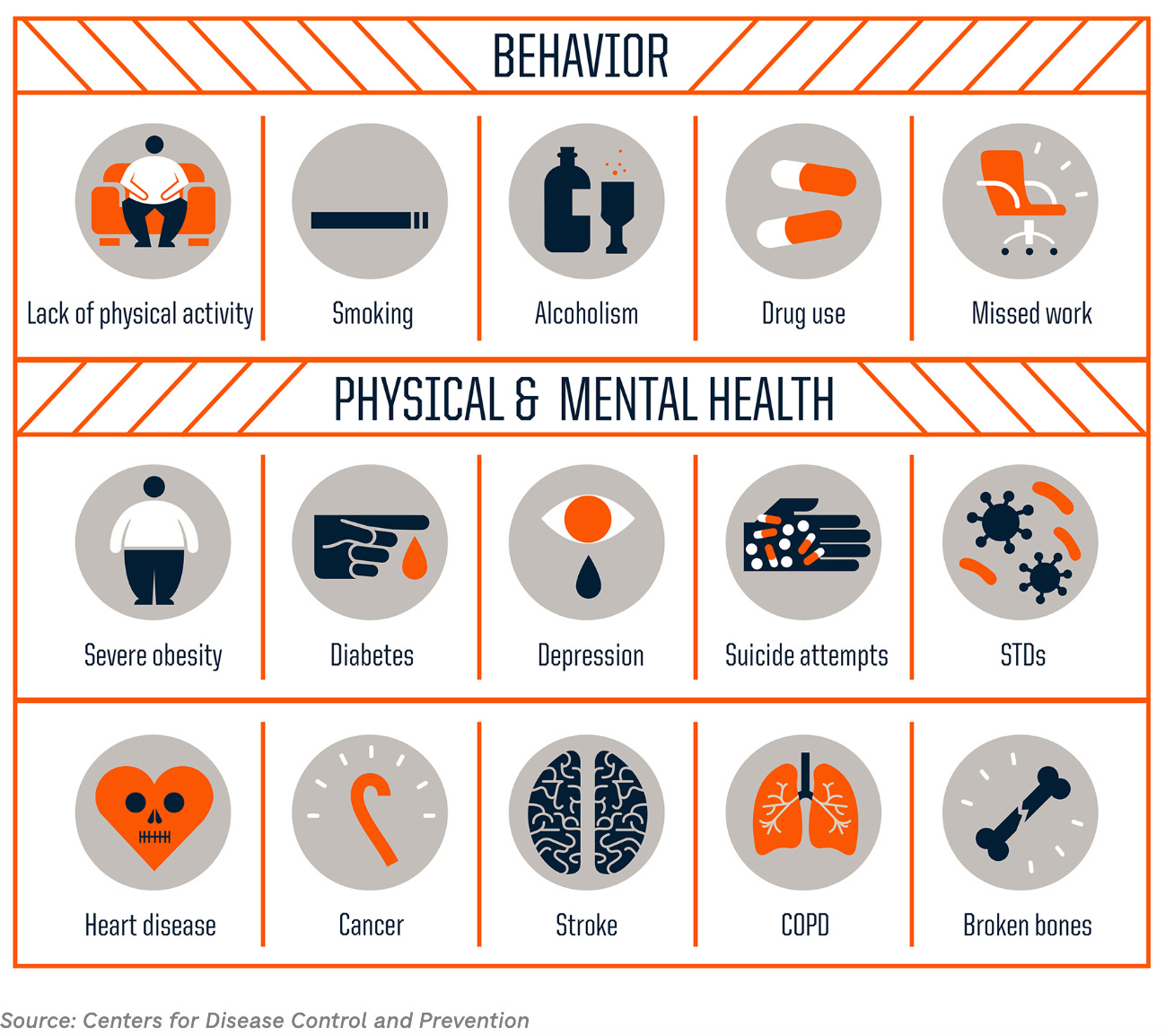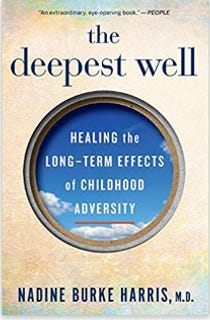Exploring Adverse Childhood Experiences
Week Two: Purple Elephant Trauma Series
This article is a summary of the posts that have been shared on Facebook this week. The impact of trauma is felt by those who sit on both sides of the political aisles. It is neither red nor blue—thus, a purple elephant. More important than any election result is that we care well for one another and also the most effective way to do that is to learn about the impact of trauma. Trauma is the purple elephant in every conversation I read. We need to be better informed! When we know better, it is then possible to do better. It is time to begin class!
Note: What I will be offering in these posts is only a glimpse of the depth of knowledge you can access in ATN’s Trauma-Informed Certification!
Day One: What is the Adverse Childhood Experiences Study?
Question: What was the history and importance of the Adverse Childhood Experiences (ACE) research?
The impact of trauma is present across all demographics of our country and world and was not well understood before the Adverse Childhood Experiences (ACE) study. Now, over thirty years later the research has been replicated and expanded and is increasingly informing all sectors of the helping professions. This excerpt from Trauma in the Pews provides a brief introduction:
E-3 Module Five Participant Manual: Trauma and Stressor-Related Disorders (Olathe, KS: Pathway to Hope, Inc., 2021) 1-2. (Information was originally written and published in this manual and has been included and/or adapted with permission.)
Day 2: What Does Your ACE Score Mean?
Question: What does the ACE survey measure and what do the scores mean?
Hope fully the information from last week provides insights into ways that you may have been impacted by trauma. The ten questions on the ACE survey focused on specific areas of abuse, neglect, and household dysfunction.
Other than being before the age of nineteen, the results do not indicate the ages at which adverse experiences occurred, nor do they indicate the number of incidents. Thus it is only a general indicator and most importantly, it is not predictive. Higher scores do indicate the likelihood that an individual might be impacted (More on this tomorrow).
You can complete the ACE survey at the ACESTooHigh Website. Information about Positive Childhood Experiences (PCEs) is also included on this page. PCEs will be discussed later in the week.
Also available at NPR—Take The ACE Quiz — And Learn What It Does And Doesn't Mean
Day 3: What Did the ACE Research Tell Us?
Question: How can a higher number of Adverse Childhood Experiences (ACEs) impact adults?
While speaking at the Attachment & Trauma Network conference shortly after publishing BRAVE, a participant asked me how ACEs might impact student learning. I admitted that I wasn’t sure; what I did not admit was that I didn’t have a clue what she meant. Everyone has a moment where the divide between not knowing and knowing something is crossed. I had no idea how much what I was about to learn would impact my work. This chart of the areas that high ACE scores impact summarizes what I was about to learn.
What I learned was eventually explained in Trauma in the Pews:
Then I came across a series of bar graphs showing the increased chance of risky health behaviors that rose in lockstep with the number of ACEs an individual experienced [see bar graphs here]. These behaviors included smoking, alcohol and drug addiction, promiscuity, and suicide. As I stared at the graphs, it began to sink in—the church traditionally called all these behaviors “sin.” In truth, they are all survival-based forms of self-regulation, as discussed earlier—suicide is the result of finding no other option to calm the inner storm. (TITP, p. 146)
The following video provides an overview of the impact of a higher ACE score. Again, it is not predictive, but the correlation is clear. The video ends on a positive note! Understanding ACEs gives every profession the necessary knowledge for developing strategies to mitigate the impact.
Day 4: How has the ACE Research Expanded?
Question: What other types of adverse experiences can impact children and communities?
One research study—as impactful as it was—did not address the wide range of adverse experiences that can impact children and communities. In the work that grew from the study the following three areas where—or how—adverse experiences can occur are noted in the image:
Households (or Adverse Childhood Experiences)
Community (or Adverse Community Experiences)
Environment (or Adverse Climate Experiences)
For more information and the source for this image, go to PacesConnection.
The amount of research that has been done since the ACE study was published both confirms and expands the initial work. A sampling of this work can be found at the CDC website.
Day 5: What are Positive Childhood Experiences?
Question: What are PCEs and how can they buffer the impact of ACEs?
This week’s information ends on a very positive note! (pun intended) Positive Childhood Experiences (PCEs) make a difference! “PCEs refer to the nurturing, supportive, and enriching experiences during childhood that promote emotional well-being, healthy development, and resilience.” (ChatGPT)
The seven questions below can be used to determine the degree to which your childhood included PCEs. (Source)
How much or how often during your childhood did you:
feel able to talk to your family about feelings;
feel your family stood by you during difficult times;
enjoy participating in community traditions;
feel a sense of belonging in high school;
feel supported by friends;
have at least two non-parent adults who took genuine interest in you;
and feel safe and protected by an adult in your home.
The following information on the ACEsTooHigh website provides background information on the work being done in this area. (Note, many of the subsequent research studies are listed there also!)
“In 2019, a team of researchers — Dr. Christina Bethell, Jennifer Jones, Dr. Narangerel Gombojav, Dr. Jeff Linkenbach and Dr. Robert Sege — found a dose-response association between positive childhood experiences and adult mental and relationship health among adults who had experienced ACEs, irrespective of how many ACEs they had. This means that it’s really important to have positive childhood experiences, no matter how much adversity you have in your life. And if you have a lot of adversity and a lot of positive childhood experiences, you are less likely to suffer the consequences of ACEs. However if you have no positive childhood experiences and few ACEs, the consequences of the ACEs are more likely to appear.”
For additional information on PCEs see Hope: Healthy Outcomes from Healthy Experiences
Week Two Reflection Questions:
What are ACEs and PCEs, and how have they impacted your life or the lives of those you know? Does this information expand your thoughts about what constitutes childhood trauma or adverse childhood experiences and its effect on those who have been impacted?
This series will take a break for the week of Thanksgiving and return to explore the topic of resilience. It may not be what you think it is!
Additional Resources:
Dr. Nadine Burke Harris, former Surgeon General for the State of California has been a prominent voice in our nation’s understanding of ACEs. I highly recommend both of these resources:
Watch the TedTalk: How Childhood Trauma Affects Health Across a Lifetime
Order the Book:
The Deepest Well: Healing the Long-Term Effects of Childhood Trauma and Adversity
We will take a break over Thanksgiving week and return the next week with a look at the importance of resiliency, what does the term mean, and how is it developed or impacted.










Thank you for this! I touch on some of these topics in my memoir and quote Dr. Harris. This is valuable information and I hope it reaches the people who need it!